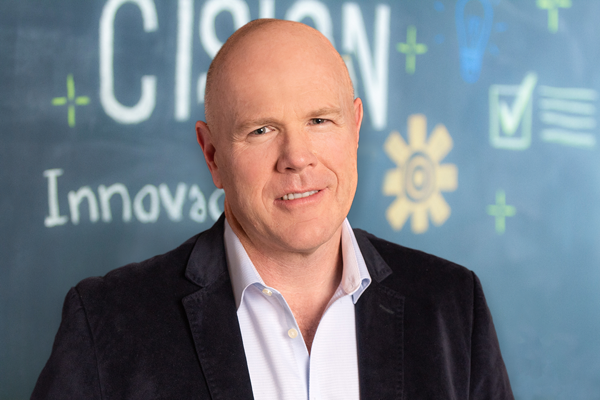3 Predictions for Communicators in 2023
By Jay Webster
January 2023
Communicators today face significant challenges: rapid social and economic change, increased political strife, global upheavals, climate crisis, the COVID-19 pandemic, war in Ukraine and a rapidly evolving media landscape.
Communication practitioners are expected to analyze data, target the right journalists, personalize their pitches, measure and report on their results — and do it all quickly.
At the same time, most journalists feel overwhelmed by poorly targeted pitches, as evidenced by Cision’s 2022 State of the Media report. To be effective, strategic communications professionals must evolve inefficient legacy practices that no longer deliver results. The embrace of new tools, such as AI-based predictive analytics and machine learning, is essential.
These technologies, when applied correctly and in good faith, can empower PR professionals to do their jobs more efficiently and remain effective — at scale.
At Cision, we envision new ways in which technology can be applied to support strategic communications with systems and data that facilitate meaningful, constructive relationships between media professionals, subject matter experts and influencers. My philosophy is to focus on the people behind the products and the ways we can help them reach their unique goals.
The most effective and empathetic way to apply advanced technologies is to enhance — not replace — the crucial human element.
For 2023, I’ve identified three key changes that companies and brands will need to navigate in this complex and fast-moving environment. The question is not if, but how.
Brands are expected to speak up.
The era of brand neutrality is over, as social consciousness is increasingly important to consumers. The events of the past year have revealed buyers’ expectations that brands will take a stand on important issues.
Consumers are pushing brands to clearly state their values and positions, and they’re demanding that companies go beyond just making statements while doing business as usual; brands are being held accountable for taking action to fulfill their DE&I and ESG goals, and to align with the values of their customers and partners. Authenticity is the new currency in brand loyalty.
One major challenge is the ongoing generation and propagation of misinformation. New ownership at Twitter seems to embrace absolute freedom of speech, and editorial controls have been quickly removed.
Combine this with a widely expected global recession and you have an environment where conspiracy theories and the promotion of simplistic villains and heroes in complex situations can gain real traction.
It will be crucial for communications professionals of all stripes — publicists, brand managers and marketers — to understand public sentiment and know where and when different constituencies expect to hear from brands.
Technology can surface critical conversations, changes in the marketplace and trends so humans can do what they do best: Consider the options and act accordingly.
AI gets real for PR pros.
Artificial Intelligence in the creation of content is moving beyond applications such as SEO, opening the door to data-driven narratives and full-fledged content generation. AI-based natural-language tools exist that can produce copy for a basic press release that a human writer can then refine.
Deployed as a hybrid between humans and machines, AI will push automation closer to the finished product as it enters the communications lifecycle.
Technology might provide fact-checking algorithms, data-driven insights, and better awareness of brand sentiment, but relying too much on tech for this data without interpreting the information through a human lens can get brands in trouble. For powerful, nuanced and effective communications, human understanding will always be needed.
One promising application of AI in strategic communications is predictive analytics, an emerging technology that can help communications practitioners make better decisions, prevent crises, amplify opportunities, and create targeted communications.
Applied correctly, predictive analytics can recognize trends and enable professional communicators to make informed decisions about how or if to respond to a developing situation, rather than scramble to catch up after the fact.
The journalist-influencer is on the rise.
Journalists are increasingly taking control of their own brands, and promoting their content and voice to readers via Substack, Medium, Facebook, etc. These platforms present an opportunity for professionals to build stable careers in an important profession.
However, as the practice accelerates, so do the challenges. The cursory level of information contained in the traditional media database will prove to be inadequate in adapting to this new normal. Communications pros need to build authentic relationships, not acquire more lists.
Familiarity with a body of work will be much more effective in the determination of who is a writer vs. a journalist. Algorithmic analysis of published content for factual accuracy, audience and engagement data, and vertical expertise will be vital in the identification of well-matched journalists and outlets going forward. An environment that fosters collaborative discovery and communication is what’s needed to succeed, not more email.
This shift in power from traditional media brands to journalist-influencers will disrupt the way companies interact with the media, requiring strategic communication professionals to create and adopt innovative and flexible strategies.
While intelligent use of technology is important, relationships — the “R” in PR — will be even more important. That means evolving tired products and process toward a technology purposely designed to support the curation of relationships between communicators and journalists by creating the time and space for human connection.
What do these trends mean for communicators?
In 2023 and beyond, relationships will matter more than ever. Making predictions based on available data, knowledge and experience is as much art as science. Systems gather, organize and analyze enormous volumes of data to identify patterns, but can only go so far. It takes human understanding to find meaning in patterns and decide the best way to respond.
Applied thoughtfully, technology doesn’t replace or commoditize PR and communication-related activities. Instead, it opens the door to improving, enhancing and accurately measuring them.



